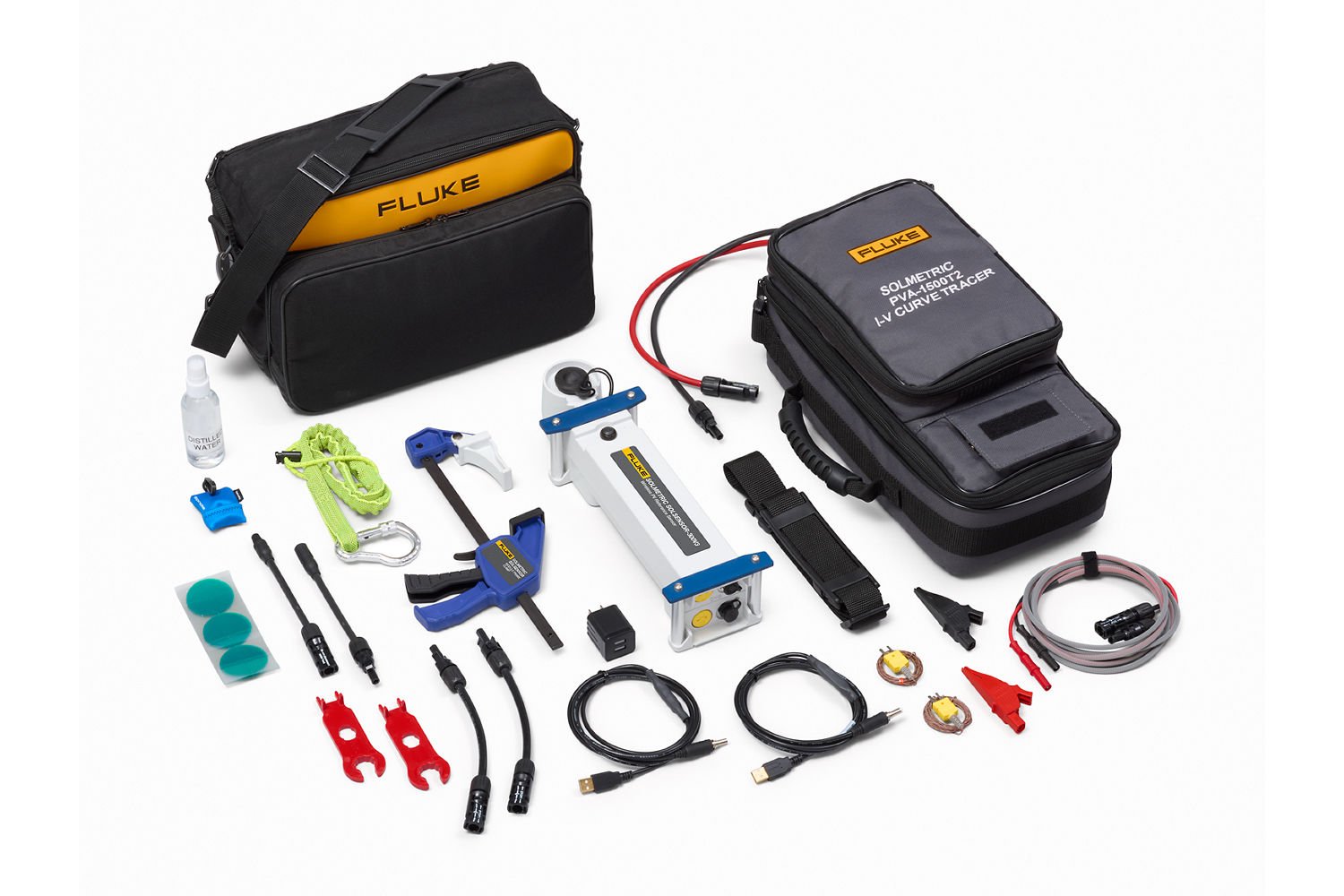As PV arrays age, there are many potential causes of system underperformance. Some may be expected, such as soiling losses or long-term array degradation. Some may be unexpected, such as bypass diode failure, cracked modules, and so forth. Because I-V curve tracers capture all the current and voltage operating points of a PV source, they are uniquely capable of identifying symptoms of underperformance in PV systems.
Every module datasheet provides a model I-V curve that represents all the current and voltage combinations at which you can operate or load the module under Standard Test Conditions (STC). When a measured I-V curve differs significantly in height, width, or shape from the predicted I-V curve—which is based on the model I-V curve but adjusted for actual irradiance and temperature conditions—the nature of the deviation provides clues about potential performance problems. I-V curve tracers, such as the Fluke Solmetric PVA-1500, are instrumental in detecting these symptoms of underperformance.

Fluke Solmetric PVA 1500 Volt PV Analyzer Kit with Fluke SolSensor
Safety Considerations in PV System Troubleshooting
Safety is paramount when working with electrical systems. Understanding the construction and operation of the PV system, using properly rated test equipment, and adhering to safety standards such as NFPA 70E is essential. Using I-V curve tracers, like the Fluke Solmetric PVA-1500, can enhance safety compared to other testing methods as it allows for testing without the need for the circuits to be under inverter load.
Basic Testing Procedure
In commercial and utility-scale PV systems, I-V curve traces are typically measured in electrically isolated combiner boxes. For instance, if zone-level monitoring or aerial thermography indicates underperformance in a combiner box, it can be flagged for inspection. Once isolated, visual inspections followed by I-V curve tracing can identify underperforming source circuits. Calibrated performance measurements involve installing an irradiance sensor in the plane of the array and attaching a temperature sensor to the back of a module. Each PV source circuit is tested individually, with the process taking as little as 10 to 15 seconds per circuit, and data are saved electronically.
Normal Shape and Performance
To identify performance problems in the field, you must have a standard for comparison. In troubleshooting situations, you may use measurements taken on neighboring PV source circuits for comparison. However, module nameplate data are generally the basis of comparison, especially when you are benchmarking performance over time.
Prior to performing I-V curve testing, you specify which module you are testing and how many modules are connected in series or parallel. Based on these and other setup inputs, the software calculates expected performance characteristics—such as Isc, Imp , Voc, Vmp, and Pmp —at standard test conditions. Since conditions in the field invariably differ from factory test conditions, I-V curve tracers use mathematical models to account for actual irradiance and temperature conditions in the field and generate a predicted I-V curve and maximum power value for the PV source circuit or module under test.
If a PV source circuit or module is performing normally, its I-V curve has a normal shape. Further, the maximum output power rating, which the curve tracer calculates from the I-V data, will closely approximate the predicted maximum power. We use the performance factor (PF) in this context to quantify how well a measured I-V curve agrees with a predicted curve. It is reported as a percentage and calculated using the measured and predicted maximum power (PMP) as shown in Equation PF = (measured PMP ÷ predicted PMP) × 100. A normal curve shape and a performance factor between 90% and 100% indicate that a PV source circuit or module is operating correctly and is not seriously shaded or soiled.